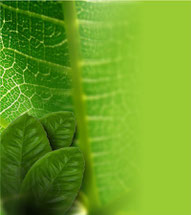Theme XVIII: Heterocycles
Pentagonal heterocyclic compounds with one heteroatom: furan, thiophene and pyrrole.
Main characteristics and properties of
the pentagonal heterocyclic compounds with a heteroatom. Furan, thiophene, pyrrole. Chemical structures. Π-Electron cloud.
Pentagonal heterocycles with one heteroatom contain a five-membered ring and one of them is different from carbon.
Furan contains in its pentagonal ring one oxygen atom, the thiophene one sulfur atom and pyrrole one nitrogen atom.
Furan Thiophene
Pyrrole
In these structures two double bonds are observed, however not properly represent the properties of these compounds since these links are not fixed, but there is electron delocalization making
these rings have aromatic characteristics.
This phenomenon is explained in the following representation:
Z-Heteroatom
Two of the four free electrons of the heteroatom are combined with the π-Electron cloud to complete the sextet of electrons delocalized in the ring, hence these compounds are considered pseudo - aromatic.
This feature allows the electrophilic substitution reactions. For this reason the pyrrole can be easily oxidized and furan can give an addition reaction.
Electrophilic substitution reactions do not occur in a similar way to benzene since the aromatic character of the pentagonal heterocycles is weaker.
Thiophene is easily nitrated using a mixture of nitric acid and acetic anhydride to form 2 - nitrothiophene. Also is easily produced the thiophene- 2-sulphonic acid by stirring
with sulfuric acid.
These three heterocycles react readily with halogens producing mixtures of substitute products such as 2,5 - dibromothiophene and tetraiodopyrrole.
see also
Pyrrole
Porphyrin. Porphyrin ring
Chlorophyll
Hexagonal heterocyclic compounds: The Pyran and Pyrimidine
Pyrimidine ring
Indole, tryptophan, indole-3-acetic acid
Purine, uric acid, adenine, guanine.
Structure of nucleic acids

 Pharmacognosy´s topics - Medicinal plants
Pharmacognosy´s topics - Medicinal plants







Write a comment